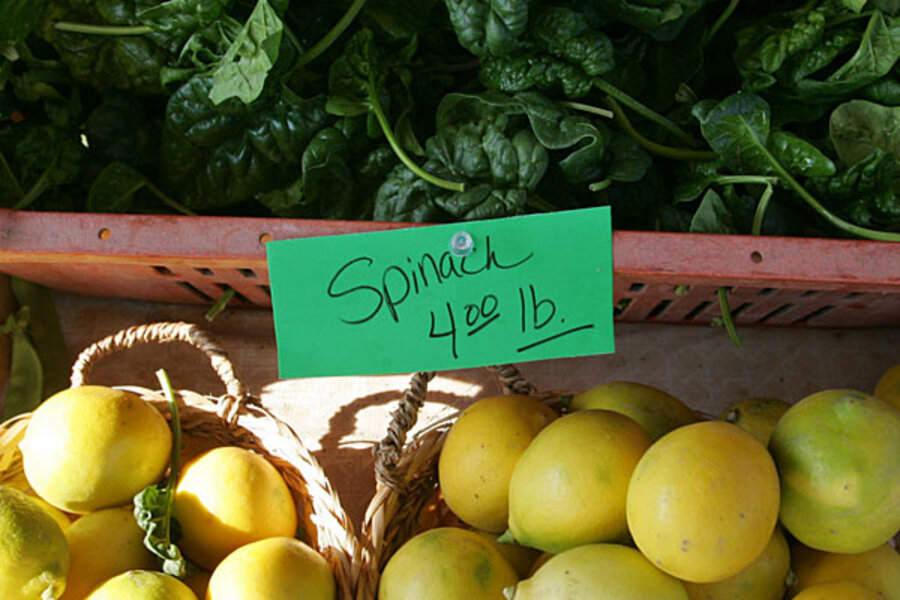Farmers markets: how to make sure you are buying local for Thanksgiving
Loading...
| Los Angeles
Thanksgiving seems to bring out a desire among many of us to press the persimmons, caress the kale and maybe pat a pumpkin or two with the knowledge that it came from some fertile ground not too far away from us.
Whether we have this impulse to see ourselves as part of a verdant farm community at other times of the year may depend on how close a local farmers market is or how great an awareness we have of the economic and environmental issues that drive the “buy-local” food movement. (See websites such as the sustainable table for more info on that.)
But even with all the good intentions to support local farmers and get the freshest, most pesticide-free green beans or broccoli this time of year, it isn’t always so easy to do.
IN PICTURES: The foreign and domestic food chain
Even the granddaddy of farmers markets in the heart of Los Angeles has had to tussle with farmers bringing in grapes imported from, say, Chile, or oranges that have been spray-painted to look riper than they are, says manager Stan Savage.
So when even the most established venues occasionally have to send a farmer packing for misrepresenting the origin of his or her produce, what can the average consumer do to ensure that that rutabaga, yam, or cabbage really came from some terra firma not to distant from where its being sold?
The first clue may be a simple touch, says Tom Tapia, of Tapia Bros., a farm and market stand in the San Fernando Valley.
“If it feels waxy, then it’s probably not local,” he says. Most likely, it’s been picked up from big wholesale markets where produce is shipped in from other parts of the country or world and is wax-coated or even painted for both cosmetic and preservation purposes. Also, he says, local farmers don’t take the time to sort and ensure that all the apples or plums are exactly the same size or color. “You’re going to see a lot of variation in truly local produce,” he points out.
Beyond those insider tips, simple common sense can go a long way. Ask questions, both at your local grocery or farmers market. California has a two-decade-old state certification program for farmers markets. At minimum, says Jay Van Rhein, of the state Department of Food and Agriculture, this means the produce is grown in the state. A lot of farmers will make the extra effort to tell you just how local they are, he says, “with photos of the farms on their stalls.”
And even though there are some 700 certified farmers markets in the state, it pays to ask, says community activist Stevie Stern. Neighbors in her community banded together just over a year ago to bring a new farmers market to the area and bothered to obtain official certification – which includes inspection and oversight of each vendor. But, she points out, “not even a mile away from us, there is another farmers market without the certification, and I don’t think people realize there is a difference.” At the noncertified site, she says, “big refrigerated trucks routinely pull up with produce from who knows where.”
Getting to know the farmers in your local farmer’s market is probably the best move a committed buy-local consumer can make, says Mr. Savage. “I encourage people to talk to our farmers, our butchers, our poultry farmers,” he says. It’s really hard to misrepresent what you grow on your farm when you have regular customers and they want to know all about the farm, he adds.
Getting to know the farmers and the people who live around you is part of the point of buying local, says Ms. Stern. Beyond that she adds, there are all the other benefits, from fresher food that lasts longer to just the pleasure of encountering what thrives in the part of the world you live in.
“Because I care about buying and supporting local farmers, it also means I have new taste experiences and encounter produce I might never have tried if I didn’t go out with the idea of seeing what’s in season,” she says, adding, “a woman at our local market handed me a perfectly ripe persimmon just the other day and I tried it. I probably would never have done that at a grocery store.”





